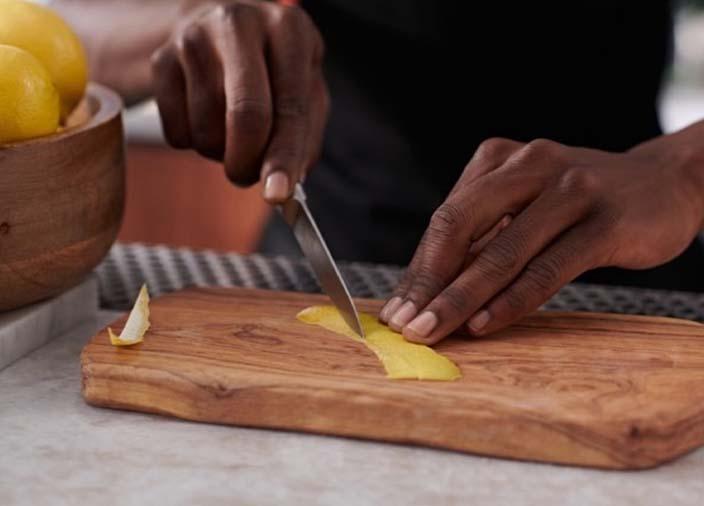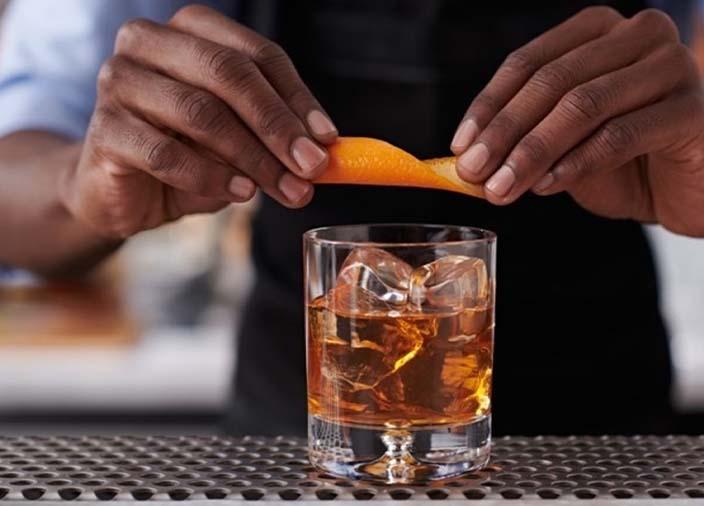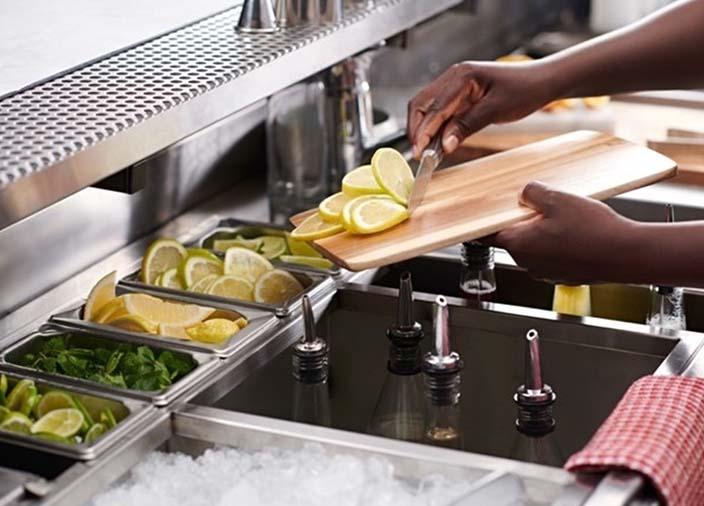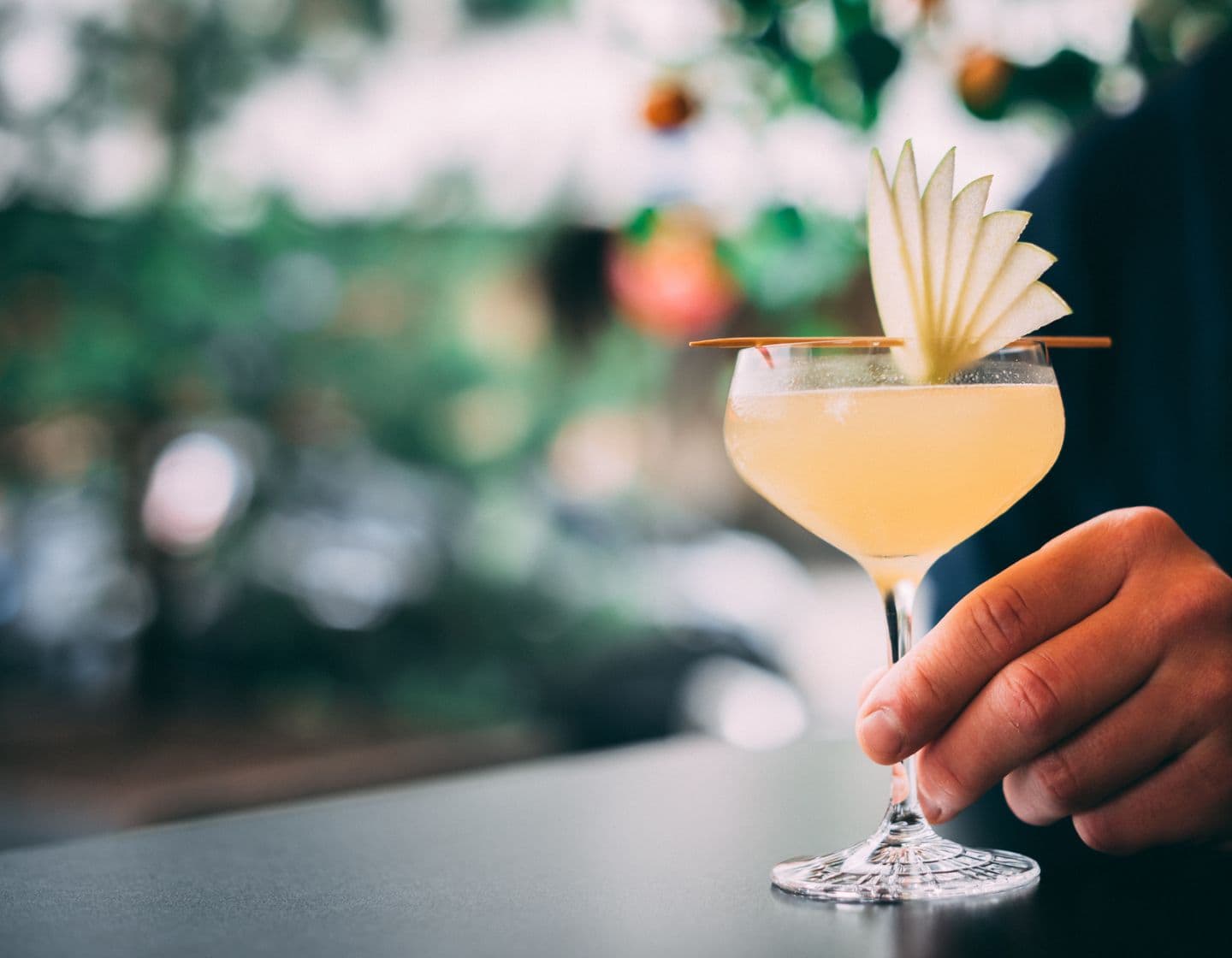Cocktail Garnishes: A Complete Guide
Explore the art of cocktail garnishes and up your garnish game with this step-by-step guide. From citrus twists to edible flowers, learn how to use garnishes to elevate your drink’s appearance, aroma, and flavour.
Estimated reading time: 3 minutes
In the world of cocktails, appearance is nearly as essential as taste. Some would even say we taste with our eyes...
A cocktail garnish doesn’t just sit on a drink for no reason - it elevates, complements, and completes the story of the cocktail. As we delve into the art of cocktail garnishing, we'll explore its different roles in aesthetics, flavour, and aroma - turning an ordinary drink into a sensory delight.
Cocktail Garnishes: Then & Now
Historically, garnishes began as simple accompaniments to enhance a drink's appeal. Over time, as mixology evolved into an art form, garnishes transformed from just decoration to essential components, bridging the gap between a drink's visual appeal and its aroma and flavour profiles.

COCKTAIL GARNISHES: STYLES AND INGREDIENTS
When thinking about which cocktail garnish to use there are many different types to consider. Understanding which garnish suits which type of cocktail is essential when bringing your serves to the next level. Here are the key cocktail garnish styles and some tips on how best to use them.
- Citrus: Whether a wheel, twist, wedge, or zest, citrus garnishes, including lemons, limes, oranges, and grapefruits, add a refreshing aroma and hint of flavour. A citrus twist, in particular, can release essential oils, enhancing the drink’s aroma.
- Herbs: Mint sprigs, basil leaves, or rosemary stems infuse drinks with a subtle scent, complementing or contrasting the cocktail’s primary flavours. They often find their way added on top of mojitos, juleps, and other herb-centric beverages.
- Berries and Fruits: From a simple cherry in a classic Manhattan to a skewer of mixed berries, fruits provide colour, texture, and taste.
- Edible Flowers: Not only do they add a burst of colour, but edible flowers like violets, roses, and hibiscus can also impart delicate flavours and aromas.
- Rims: Salted, sugared, or spiced, a well-dressed rim can change the entire profile of a drink, adding texture and flavours with each sip.
- Other Accents: Think olives in martinis, onions in a Gibson, or a smoky bacon strip in a Bloody Mary. These garnishes can be as traditional or inventive as the drink or occasion demands.
TECHNIQUES TO PERFECT YOUR COCKTAIL GARNISHES
Master these essential garnish techniques:
- Twisting Citrus: When creating a citrus twist, it's essential to ensure minimal pith (the white part) is attached, which can introduce bitterness.
- Bruising Herbs: Gently slapping or muddling herbs like mint releases their oils, making their aroma more pronounced without overpowering the drink.
- Rimming the Glass: To achieve an even rim, use a citrus wedge to wet the glass's edge, then roll or dip it in your choice of salt, sugar, or spice.

How to Make Cocktail Garnishes
When crafting your garnish fruits, a sharper knife is easier to use and is safer than blunt blades, so having a good sharpening tool at hand is essential to ensure that utensils are always ready for use.
Using suitable knives correctly makes your job easier. In your venue, you should have the following:
- A small knife – Use for slicing, taking the ends off citrus fruits and dealing with softer fruits that are more likely to bruise.
- A large knife – Works best for large fruits, such as pineapples or grapefruits.
- Peeler or channel knife – Perfect for quick, easy citrus twists and more exotic garnishes.
- A chopping board – Good quality, washable, toughened plastic works best.
How to Cut Garnish Citrus Fruits
Citrus fruits are one of the most widely used ingredients for cocktail garnishes. Here are some simple steps and tips to get you started.
- Use a clean, dry knife and chopping board.
- Wash the fruit.
- Chop off the ends.
- Cut in half and remove the pith at the core.
- Slice into wedges: Lime: 6 wedges / Lemon: 8 wedges / Orange: 16 wedges.
Tips for Cutting a Twist
- Cut using a peeler or channel knife.
- The peel needs to be long enough to tie or to twist and curl.
- It's best to start the twist at the fruit's stem.
- Cut in a spiral, not a straight line - use your knife to go around the fruit in a spiral.
- A tight spiral gives you a tight curl and a wide spiral creates a bigger, looser curl.

5 Cocktail Garnish Best Practices
We’ve put together our top five cocktail garnish tips to make sure you always get the best out of your ingredients and avoid any common mistakes that can impact your overall serve.
- Freshness first: Always use fresh ingredients. A wilted herb or dry citrus can detract from the drink's appeal.
- Preparation: Organise and prep your cocktail garnishes before service, ensuring they're at hand when crafting each cocktail serve.
- Simplicity: While it might be tempting to create a towering masterpiece, sometimes less is more. A garnish should complement, not overpower, the primary drink.
- Safety: When using edible flowers or uncommon cocktail garnishes, ensure they're safe for consumption and free from harmful pesticides or chemicals.
- Consistency: Especially in professional settings, consistency is key. Every patron should experience the cocktail in the same delightful way.
Key Takeaways
- Cocktail garnishes are essential as an aesthetic component and to add aroma and flavour to cocktails.
- Great cocktail garnishes complement or enhance a drink rather than just adding visual appeal.
- Common styles of cocktail garnish include citrus wedges, wheels or twists; fresh herbs or spices; berries and other fruits; edible flowers; salt, sugar or spice rims; and other accents such as olives and cocktail onions.
- Organise and prepare as much garnish as is practical before the shift to ensure quick, easy service.
- Always make sure flowers or other exotic cocktail garnishes are edible and safe for consumption.
Garnishing is an aesthetically pleasing and multi-sensory experience in cocktail-making. The art of cocktail garnishing, from citrus twists to edible flowers, can elevate the drink's appearance, aroma and flavour and delight your guests with a sensory journey in every sip.
Continually improve your overall bartending skills with exclusive, free training and resources, and access the latest news and industry insights when you sign up as a Diageo Bar Academy member.
